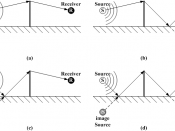In today's workplace, motivating employees to perform plays a key role in the development of high performance individuals and therefore, teams. Understanding what motivates then is key to getting results. Managers then must have a thorough understanding of what motivates their employees to form successful and productive teams. One of the main theories that managers can utilize to help explain what motivates was developed by Victor Vroom. Vroom developed a theory called Expectancy Theory (ET) that helps calculate an individual's motivation level. For the purpose of this paper, we will analyze how my current manager has contributed to my motivation level in the different facets of expectancy theory, and whether or not they were effective in motivating me. We will first define expectancy theory to use as a framework in order to make this analysis. Then we will describe the current workplace situation at [INSERT COMPANY NAME HERE]. Lastly, we will analyze each facet of ET in respects to my current manager to make our decision as to whether she has been an effective motivator.
Discussion
ET is a powerful tool in the arena of understanding employee motivation. It is defined by Schermerhorn, Hunt and Osborn as, "an internal force that accounts for the level, direction, and persistence of effort expended at work." To fully utilize ET, we must first understand all of its components. Once we have done this, we can begin analysis of my current manager's motivational success or failure. Vroom states that motivation is a function of three different factors: expectancy (E), instrumentality (I) and valence (V). Expectancy deals with an employee's beliefs on effort-performance relationships. Instrumentality deals with an employee's beliefs on work-outcome relationships. Lastly, valence deals with an employee's beliefs on desirability of these work-outcomes. Vroom uses these three factors as a base for...


